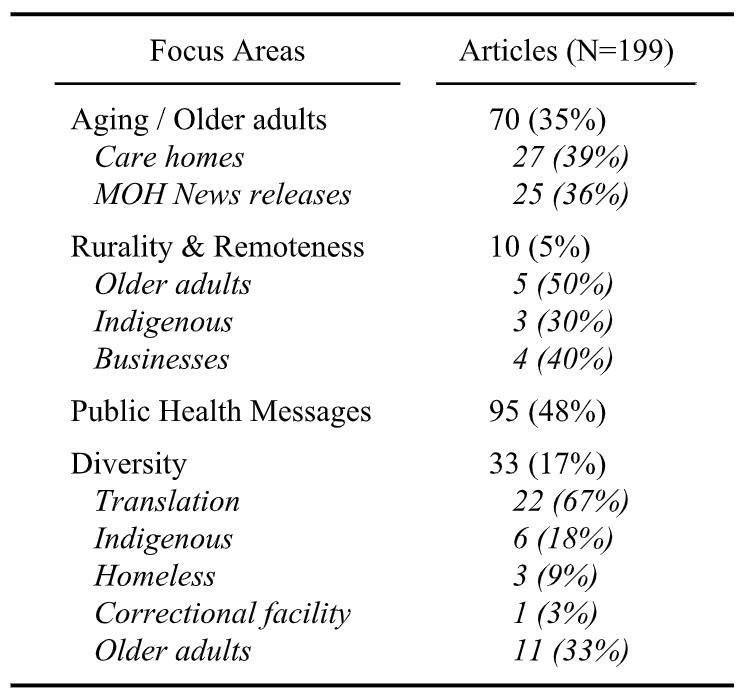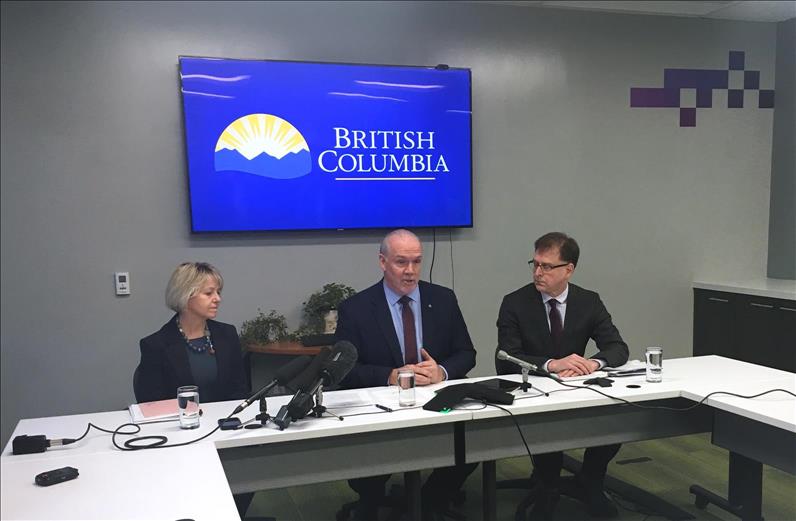(MENAFN- The Conversation) British Columbia has ranked fourth among Canadian provinces in . Public health measures have required citizens to help prevent the spread of COVID-19 through good hygiene, physical distancing, staying home and self-isolating.
The COVID-19 pandemic has and has . Early epidemiological data for B.C. indicated that about 60 per cent of cases were adults aged 50 or older, .
Focusing on the rural
Prevention efforts initially focused on large urban areas due to . Several months into the pandemic, attention was finally paid to the impact on .
Research indicates high risk of COVID-19 contraction and complications for and the likelihood of higher COVID-19 death rates for racialized older adults.
Given that older adults living rurally are known to experience , COVID-19 can exacerbate health-care inequities facing this population.
The pandemic has had different effects on older adults, including .
The pandemic has revealed disparities in internet access between rural and urban populations. Reporting on COVID-19
The news media has been the primary source of information during this pandemic, and so we conducted a media analysis to determine the extent of coverage of older adults and rural and remote communities.
Our analysis began with risk, issued on Jan. 21, 2020. We continued until April 4, 2020 — on that day, and provincial health officer Dr. Bonnie Henry announced that .
We sourced media (news articles and press releases) through the Google News database using a combination of the following search terms: rural, remote, British Columbia, BC, COVID-19 and coronavirus. This search yielded 199 records, which we analyzed to determine key messages and whether or not older adults, rural and remote communities, and diversity were considered.
Read more:
Referencing older adults
Surprisingly, only 70 articles — 35 per cent — mentioned older adults, with 27 of these being about care homes. Twenty-five articles that addressed older adults were news releases from the Ministry of Health (MOH), stressing the need to protect older adults through physical distancing. After , the MOH referenced .

COVID-19 Media analysis findings. (Authors), Author provided Ten articles talked about rural and remoteness, half of which mentioned older adults, recognizing their vulnerability and the need for testing; four of these articles focused on businesses yet only to the extent to which they were impacted; and three articles mentioned Indigenous communities.
The latter were concerned with the common phrase ''flatten the curve'' and anxiety for survivors of residential schools, sanitoriums and hospitals related to an early release of a vaccine to rural, remote and First Nation communities, with people asking '' ''
The initial public health messaging on television and online was highlighted as being unlikely to reach rural and remote areas; . — the only provider of commercial radio to 42 First Nations communities in Central and Northern B.C. — took up this challenge, .
Thirty-three (17 per cent) articles addressed diversity in some way, with two-thirds focusing on the languages and dialects of COVID-19 materials, including Chinese languages, Punjabi, Farsi, French, Tagalog and 17 Indigenous languages and dialects. Six articles focused on Indigenous communities, with three being about the letter between the MOH and Union of BC Indian Chiefs and others expressing concern about their risk and calling for outreach.
One article was about faith communities, and another on deaf and hard of hearing people. The former indicated that outreach plans had been made, including a meeting between public health officials and 128 faith leaders across the province to ask for their assistance with .

Premier John Horgan, centre, Provincial Health Officer Dr. Bonnie Henry, left, and Health Minister Adrian Dix take part in a conference call with B.C. faith leaders about COVID-19 during the early days of the pandemic. (THE CANADIAN PRESS/Dirk Meissner) Other articles that addressed diversity were about people living on the street and prison populations, with both groups characterized mainly as disease vectors. On March 21, 2020, the day the ban on evictions was announced, attention was also paid to those who are housing-insecure or live on the street; however, no additional support for this population was reported. Further, the ban on evictions and the rent freeze did not include .
One-third of those articles that mentioned diversity were also about older adults. This pattern is similar to that seen in global media where, despite the focus on care homes in the media coverage of COVID-19, not one article mentioned dementia.
Forty-eight percent of the articles included public health messages about risk and prevention, such as washing hands, maintaining distance and self-isolating. There was no mention of specific risk factors for rural older adults like continuing to provide care to grandchildren, as happens frequently in rural areas, and .
Media articles during the review time span paid no attention to the challenges likely to arise from having to self-isolate, such as getting groceries and medications, maintaining family and social connections, receiving primary and community care (virtual medical appointments, no home care), and other '' .''
Protecting older adults
Although it became evident that older adults were the most susceptible, the media did not identify special protective measures for older adults nor . Further, those older adults living in the community and aging rurally and remotely were overlooked in the messaging with the primary focus being groups considered vectors of disease, including those living in care homes.
Read more:
In line with social distancing, community groups and programs for persons with dementia have been suspended or moved online, with the latter including . Given the longstanding issue of , older adults with dementia and their carers residing rurally and remotely are at particular risk of social isolation during the COVID-19 pandemic if the only options for connection and support are virtual.
Early media coverage portrayed older adults as in need of protection. At the same time, the media neglected the impact of the pandemic on older adults. The protection came in the form of classic public health measures, but the challenges arising from this protection and the differential impacts on older adults as a group were overlooked.
MENAFN13052021000199003603ID1102076939
Legal Disclaimer:
MENAFN provides the information “as is” without warranty of any kind. We do not accept any responsibility or liability for the accuracy, content, images, videos, licenses, completeness, legality, or reliability of the information contained in this article. If you have any complaints or copyright issues related to this article, kindly contact the provider above.